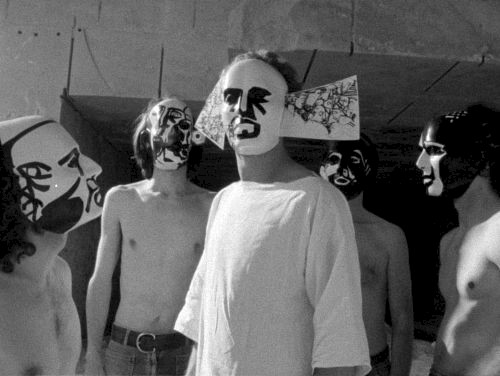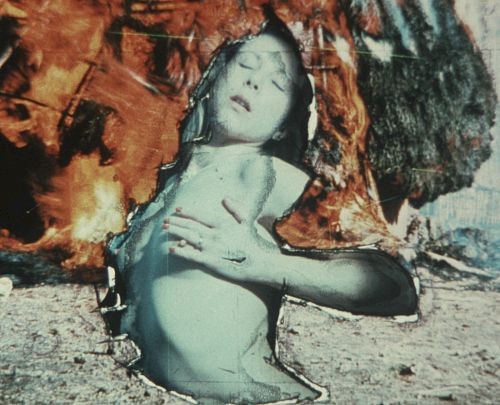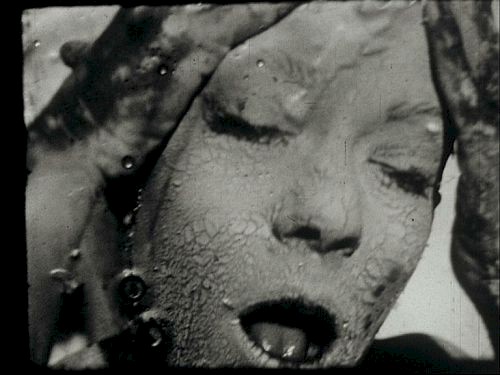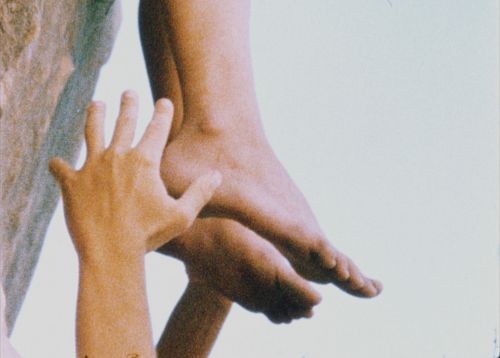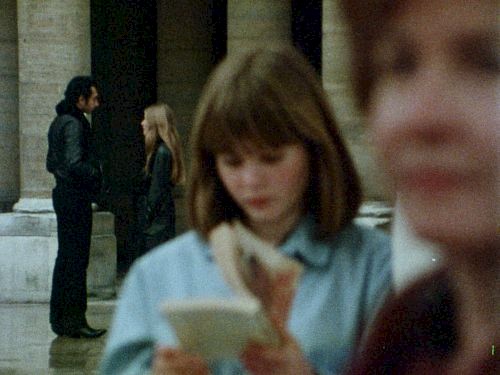The École du Corps is an invention whose author is none other than Dominique Noguez, professor of cinema at the University of Saint Charles between 1974 and 1988.
Date and place of birth of the invention: the weekly magazine Politique Hebdo n°287 from October 31 to November 6, 1977. Dominique Noguez wrote an article entitled Une école du corps? in which he recounted his experience as a member of the jury at the Hyères festival, which had been held in the spring. We can note the presence of a question mark in the title, proof of the speculative aspect of his reflection, far from dogmatic or, to say the least, taxonomic ambitions.
The films that stage the body, according to Noguez, display two lines of rupture with structural films that then dominated experimental cinema: first of all, the cinematographic stake was centered back on a figurative object, a subject. The signified thus took precedence over the signifier. Then, it was the contours and movements of this subject that determined the plastic organization of the film and its rhythm, thereby reinstating in its statement the axis of a becoming, while preserving its non-narrative character.
Noguez spotted these characteristics in many of the films made in the creative film workshops at Saint-Charles, workshops on which two major Body Art [1] artists, Michel Journiac and Gina Panne, had a certain influence. Many of these films were shown at the Saint-Charles film club, created by Noguez in 1977. Some of them were shown at the Festival du Jeune Cinéma d’Hyères that same year and won prizes, such as L’Enfant qui a pissé des paillettes by Maria Klonaris and Katerina Thomadaki (Special Jury Prize) and La cité des neuf portes by Stéphane Marti, which shared the Grand Prix with Lithophonie by Jean-Paul Dupuis. Given the affinity that linked Noguez to Marcel Mazé, then president of the CJC, most of these young filmmakers registered their films with the cooperative and participated in its activities. Saint-Charles was thus the place where the concept of the École du corps (school of the body) and the CJC joined, towards a very improbable fate. I write “improbable” because since then, “the body” sticked to the skin of the CJC, creating
reasons for union and disunion both. Concerning union, let’s mention the two programs of November 1978 of the Saint-Charles film club entitled “Cinema of the Body”, the one of December 1987, entitled “Evening of the Bodies” presented by André Almuró, and finally, the program conceived by Violeta Salvatierra for the CJC festival in 2008: “The filmed body”. Concerning disunion, the conflicts related to aesthetic issues mixed with those of power, recognition or jealousy, caused schisms, departures and persistent enmities between those who once were all cooperators of the CJC.
For the 50th anniversary, we have chosen two films that are emblematic of this history and this era, films that deeply marked the 1977 edition of the Hyères festival: Lithophonie by Jean-Paul Dupuis and L’Enfant qui a pissé des paillettes by Maria Klonaris and Katerina Thomadaki. They will be presented in two separate events. Lithophonie, shot in 16 mm during the summer of 1976, is more at the crossroads between choreographic art and cinema. It is made up of a series of patterns, pictures or scenes, as you will, in which neither art, that of dance or cinema, takes precedence over the other. The success is due to this, favored by a time when one extended, declined, explored, trusting the ability of the spectators to synchronize their own cognitive and psychic rhythms to an innovative and free artistic proposal where bodies, spaces, impregnated with light and electroacoustic score, interact without ever failing.
- Frédéric Tachou
